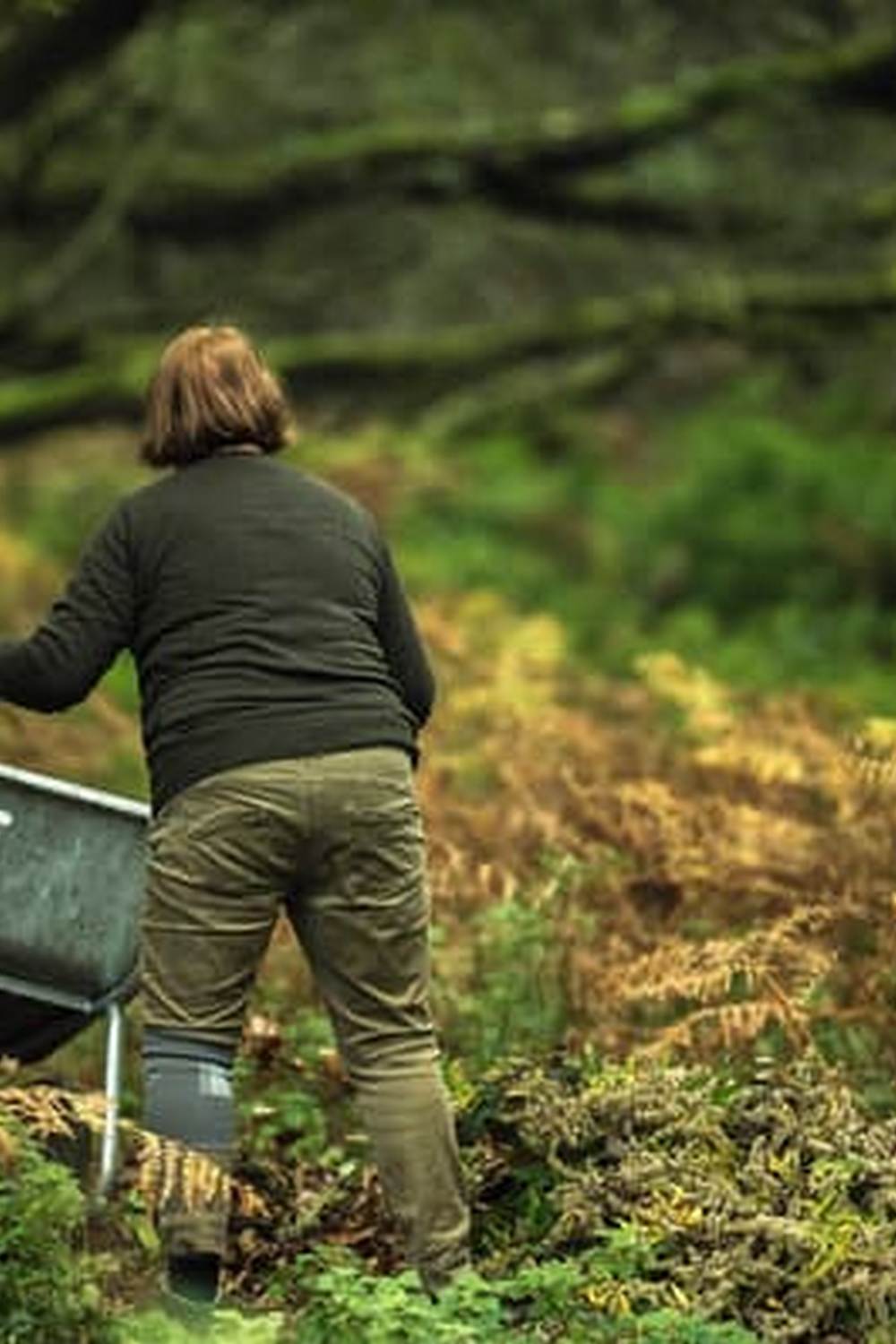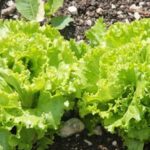Rabbits and vegetable gardens have a unique relationship that gardeners often find themselves navigating. These furry creatures, known for their love of munching on greens, can be both a delight and a nuisance in the world of gardening. In this article, we will delve into the importance of rabbits in ecosystems and agriculture, the common rabbit pests that plague vegetable gardens, as well as ways to mitigate damage caused by these adorable yet pesky critters.
While rabbits play a vital role in maintaining ecological balance and contributing to the diversity of fauna in various habitats, they can also wreak havoc on vegetable gardens. Their voracious appetite for tender young shoots and leaves can lead to significant losses for farmers and gardeners alike. Understanding how to coexist with rabbits while safeguarding your precious vegetables is crucial for anyone seeking harmony between these furry friends and their beloved garden beds.
In the following sections, we will explore techniques for identifying rabbit damage in your garden, natural methods to deter rabbits from feasting on your crops, as well as a list of rabbit-resistant vegetables that you can consider planting. Additionally, we will provide valuable tips on creating a rabbit-friendly habitat within your garden space while promoting ethical practices for rabbit control.
By incorporating these strategies into your gardening routine, you can strive towards achieving a peaceful coexistence between rabbits and vegetable gardens.
Importance of Rabbits in Ecosystems and Agriculture
Rabbits play a crucial role in both ecosystems and agriculture, contributing to the balance of their natural habitats and providing various benefits for farmers. Here are some key points highlighting the importance of rabbits in both aspects:
- Seed dispersal: Rabbits are known to aid in seed dispersal by consuming fruits, nuts, and plants, then spreading the seeds through their droppings in different areas. This process helps in plant regeneration and the diversity of vegetation in ecosystems.
- Soil fertilization: Rabbit droppings, also known as pellets, are rich in nutrients like nitrogen, phosphorus, and potassium. When scattered on the soil surface as a natural fertilizer, these pellets can significantly improve soil quality and promote plant growth.
- Predator-prey dynamics: As prey animals themselves, rabbits serve as an essential food source for numerous predators like foxes, hawks, owls, and snakes. This interdependence helps maintain the delicate balance within ecosystems by controlling rabbit populations and preventing overgrazing on vegetation.
In agriculture, rabbits have been utilized for their fur, meat, and their ability to help control weeds on farms. While some may view rabbits as pests due to their feeding habits in vegetable gardens, it’s important to acknowledge their positive contributions to both natural environments and agricultural settings. By understanding the significance of rabbits in ecosystems and agriculture, we can appreciate their role beyond just being seen as nuisances in gardens.
- Furthermore,
- It is essential for gardeners to find a balance between protecting their crops from rabbit damage while still maintaining a healthy population of these creatures in surrounding areas.
Common Rabbit Pests in Vegetable Gardens
Rabbits are adorable creatures, but they can wreak havoc on vegetable gardens if left unchecked. These furry pests have a voracious appetite for many garden plants, often causing frustration for gardeners trying to cultivate their crops. Identifying common rabbit pests in vegetable gardens is crucial to effectively manage and protect your precious produce.
To help you understand the key culprits behind rabbit damage in vegetable gardens, here are some of the most prevalent species known to be problematic:
- Eastern Cottontail (Sylvilagus floridanus): This ubiquitous species is one of the most common rabbits found in North America, known for its cottony white tail and reddish-brown fur.
- European Rabbit (Oryctolagus cuniculus): Originating from Europe, this species has been introduced to various parts of the world and is notorious for its burrowing habits and rapid reproduction rates.
- Brush Rabbit (Sylvilagus bachmani): Native to western North America, these small rabbits have a preference for dense vegetation and shrubby habitats, making them a nuisance in gardens.
Identifying which specific rabbit species are causing damage in your vegetable garden can aid in implementing targeted control strategies tailored to their behaviors. By recognizing these common culprits, you can take proactive measures to protect your plants from potential harm.
Quick Tips:
- Regularly inspect your garden for signs of rabbit activity such as droppings, tracks, or gnawed plant stems.
- Install physical barriers like fences or wire mesh around vulnerable areas to prevent rabbits from accessing your crops.
- Consider planting rabbit-resistant vegetables or utilizing natural deterrents like scent repellents or predator decoys to discourage rabbit interference.
By familiarizing yourself with the common rabbit pests that may invade your vegetable garden and taking proactive steps to deter them, you can minimize damage and cultivate a thriving garden full of bountiful produce. Stay vigilant and employ effective strategies to maintain harmony between rabbits and your cherished vegetables.
How to Identify Rabbit Damage in Your Garden
Rabbits can be adorable creatures to observe in the wild, but when they invade your vegetable garden, they can quickly become a major nuisance. Identifying rabbit damage in your garden is crucial to taking appropriate action to protect your plants. One of the most common signs of rabbit activity in a vegetable garden is chewed vegetation. Rabbits have distinctive teeth marks that leave a clean, angled cut or may even sever the plant entirely.
In addition to nibbling on plants, rabbits also leave behind pellet-like droppings that resemble small, round balls. These droppings serve as another indication of rabbit presence in your garden. Another telltale sign of rabbit damage is their characteristic tracks and runways. Rabbit tracks are small and round with four toes on the front feet and five toes on the back feet.
To further identify rabbit damage versus other pests like deer or groundhogs, look for evidence of gnawing on woody stems close to the ground. Rabbits have a particular fondness for gnawing on bark which distinguishes their feeding habits from other animals. By being able to correctly identify rabbit damage in your garden, you can take targeted measures to deter these critters and protect your beloved vegetables.
| Signs of Rabbit Damage | Description |
|---|---|
| Chewed Vegetation | Clean, angled cuts or severed plant stems |
| Pellet-Like Droppings | Small, round balls scattered around plants |
| Rabbit Tracks | Small tracks with four toes on front feet and five toes on back feet |
Natural Ways to Deter Rabbits From Vegetable Gardens
Rabbits can be cute and fluffy animals to observe in the wild, but they can quickly become a nuisance when they start invading vegetable gardens. These small mammals have a voracious appetite for greens, making them a common threat to gardeners looking to grow their own produce. However, there are natural and humane ways to deter rabbits from devouring your vegetable patch without causing harm to these creatures.
One effective method to keep rabbits at bay is by creating physical barriers around your garden area. This can involve installing fences that are at least 2 feet high with the bottom buried underground to prevent rabbits from burrowing underneath.
You can also use chicken wire or hardware cloth to enclose the perimeter of your garden and protect your plants from rabbit intrusion. Additionally, consider planting thorny bushes or hedges as a natural deterrent, as rabbits are less likely to navigate through sharp vegetation.
Another strategy to deter rabbits from feasting on your vegetables is by utilizing scent-based repellents. Rabbits have a strong sense of smell and certain odors can help deter them from entering your garden.
Natural repellents such as garlic, onions, hot peppers, or human hair sprinkled around the perimeter of your garden can act as effective rabbit deterrents. Alternatively, you may also consider planting aromatic herbs like mint or sage within your garden beds to mask the scents of appealing vegetables and discourage rabbits from approaching.
Rabbit-Resistant Vegetables to Plant in Your Garden
Planting rabbit-resistant vegetables in your garden can help reduce the chances of your crops being ravaged by these furry pests. While rabbits are known to be voracious eaters, there are certain vegetables that they tend to avoid due to their taste or smell. By strategically incorporating these plants into your garden, you can create a more rabbit-proof environment for your precious produce.
One excellent choice for a rabbit-resistant vegetable is the spicy pepper plant. The strong scent and flavor of peppers deter rabbits from munching on them, making them a great addition to your garden beds. Additionally, plants like onions, garlic, and leeks are also known to repel rabbits with their pungent aroma. Not only do these vegetables add flavor to your dishes, but they also act as natural deterrents for unwanted rabbit visitors.
Another group of vegetables that rabbits typically steer clear of includes members of the brassica family such as broccoli, cauliflower, cabbage, and kale. These cruciferous plants have a strong taste that rabbits find unappealing, making them less likely targets for nibbling.
By interplanting brassicas among other susceptible vegetables in your garden, you can help protect your entire crop from rabbit damage. With careful planning and selection of rabbit-resistant vegetables, you can enjoy a thriving garden without constantly battling with these furry intruders.
Tips for Creating a Rabbit-Friendly Garden Habitat
Rabbits are adorable creatures that can wreak havoc on vegetable gardens if not managed properly. However, creating a rabbit-friendly garden habitat can help promote harmony between these furry pests and your beloved plants. By understanding their behavior and needs, you can coexist with rabbits in your garden while safeguarding your vegetables.
Provide Shelter and Safety
One way to create a rabbit-friendly garden habitat is by offering shelter and safety for these animals. Rabbits prefer areas with dense vegetation or brush piles where they can hide from predators and extreme weather conditions. By leaving some parts of your garden slightly wild or adding shrubs and bushes, you can create suitable hiding spots for rabbits without sacrificing the aesthetics of your space.
Offer Food Sources
Another essential aspect of a rabbit-friendly garden habitat is providing natural food sources for these animals. Planting native grasses, clover, and other greens can attract rabbits to specific areas of your garden while keeping them away from your vegetable patch. Additionally, consider setting up feeding stations with hay or fresh vegetables to further entice rabbits away from your precious crops.
Limit Access to Vegetable Gardens
To maintain harmony between rabbits and your vegetable gardens, it’s crucial to limit the access these animals have to the areas where you grow edible plants. Installing fences with buried bottoms or using elevated raised beds can prevent rabbits from digging under or jumping over barriers to reach their favorite snacks. By creating physical boundaries between rabbits and vulnerable crops, you can ensure that both can thrive in their designated spaces without conflict.
Best Practices for Ethical Rabbit Control in Vegetable Gardens
Rabbits are adorable creatures that play a crucial role in ecosystems and agriculture. However, when it comes to vegetable gardens, they can often be seen as pests due to their voracious appetite for leafy greens and other garden produce. As gardeners, it is important to find ethical ways to manage rabbit populations without causing harm to these furry creatures.
Understanding Ethical Rabbit Control
When dealing with rabbits in vegetable gardens, it is essential to prioritize humane methods of control. This means avoiding lethal traps or poisons that can harm not only the rabbits but also other wildlife in the area. Instead, focus on strategies that deter rabbits without causing them unnecessary suffering.
Physical Barriers and Fencing
One of the most effective ways to control rabbit damage in vegetable gardens is by installing physical barriers such as fences. Use wire mesh or chicken wire fencing that extends at least a foot underground to prevent rabbits from burrowing under the barrier. Make sure the fencing is tall enough (at least 2 feet high) and buried securely into the ground to discourage rabbits from jumping over or squeezing through gaps.
Natural Repellents and Deterrents
Another ethical approach to rabbit control in vegetable gardens is the use of natural repellents and deterrents. Planting strong-smelling herbs like mint, lavender, or rosemary around your garden can help deter rabbits with their potent scents. Other options include sprinkling cayenne pepper or garlic powder around garden beds, as these odors are known to repel rabbits effectively. Regularly reapplying these natural repellents may be necessary, especially after rain or irrigation.
Conclusion
In conclusion, fostering a harmonious relationship between rabbits and vegetable gardens is not only possible but also beneficial for both the ecosystem and agriculture. While rabbits can sometimes be considered pests in gardens due to their appetite for fresh greens, they also play a crucial role in maintaining balance in ecosystems. By understanding the importance of rabbits in agriculture and learning how to coexist with them, gardeners can create a mutually beneficial environment.
It is essential for gardeners to be able to identify rabbit damage in their vegetable gardens accurately. By recognizing the signs of rabbit activity, such as chewed plants or gnawed bark, individuals can take appropriate steps to deter these furry creatures without causing harm. Implementing natural methods like fencing, repellents, and habitat management can help minimize rabbit intrusion while still respecting their place in the ecosystem.
Furthermore, planting rabbit-resistant vegetables and creating a rabbit-friendly garden habitat are proactive measures that can promote harmony between rabbits and vegetable gardens. By choosing plants that are less appealing to rabbits and providing alternative food sources or shelter, gardeners can reduce conflicts with these animals while still enjoying the beauty of a thriving garden.
Overall, by embracing ethical practices for rabbit control and incorporating strategies for coexistence, it is possible to maintain a healthy balance between rabbits and vegetable gardens.
Frequently Asked Questions
Will Rabbits Eat My Vegetable Garden?
Rabbits can indeed be a nuisance in vegetable gardens as they are known to eat a variety of vegetables and plants. To protect your garden from rabbits, it is important to employ various strategies such as fencing, repellents, or creating physical barriers.
What to Put on Vegetables to Keep Rabbits Away?
There are several options to consider when it comes to keeping rabbits away from your vegetables. Some effective methods include using natural repellents like garlic or pepper spray, installing fences with small openings close to the ground, or utilizing scare tactics like motion-activated devices or predator decoys.
What Is the Cheapest Way to Keep Rabbits Out of Your Garden?
The cheapest way to keep rabbits out of your garden may involve DIY solutions such as constructing a fence using chicken wire or hardware cloth. Another budget-friendly approach is to plant rabbit-resistant varieties of vegetables and herbs, which can help deter these curious critters without breaking the bank.

If you’re looking to get into vegetable gardening, or are just looking for some tips on how to make your current garden better, then you’ve come to the right place! My name is Ethel and I have been gardening for years. In this blog, I’m going to share with you some of my best tips on how to create a successful vegetable garden.





